Author: Jim F.
-
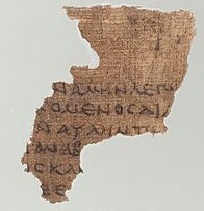
NT Sunday School Lesson 16: John 9-10
Chapter 9 Verse 1: Chapter 8 ends with the phrase “passed by” and chapter 9 begins with those words. Did the events of chapters 9-10 happen as Jesus was leaving the temple precincts, or did they occur later? (See verse 14 for a clue.) Why is it important that the man has been blind since…
-
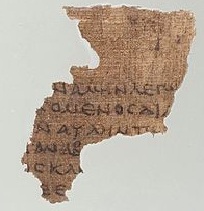
NT Sunday School Lesson 15: John 7-8
WARNING: Longer than usual notes. I agree with the generally accepted scholarly conclusion that John 7:53-8:11 is a later insertion into the original text. So I will deal with John 7:1-42 and John 8:12-59 as one narrative, the story of what Jesus does at the feast of the tabernacles. Then I will deal with the…
-
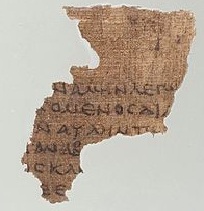
NT Sunday School Lesson 14: Matthew 18; Luke 10
Matthew 18 Verses 1-4: Why do the disciples ask the question that they pose in verse 1? What does it suggest about their understanding of Jesus’ message? What do you make of the fact that they are arguing about who shall be first so shortly after Jesus has talked about his coming death (Matthew 17:22)?…
-

NT Sunday School Lesson 13: Matthew 15:21-17:13
There are a number of stories in this reading, and they appear not to be given to us in a haphazard way. There is a natural progression from one to the other: (1) Jesus heals the Canaanite woman’s daughter (Matthew 15:21-28). (2) He heals many and multitudes come to him (Matthew 15: 29-31). (3) He…
-

NT Sunday School Lesson 12: John 5-6; Mark 6:30-44; Matthew:14:22-33
As is almost always the case, there is far more here than we can cover in one lesson. These materials will focus on John 5, but I will also include some questions on John 6. John 5 Some have suggested that the gospel of John is partially constructed around seven wondrous works or miracles. (I…
-
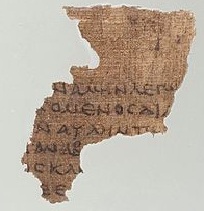
NT Sunday School Lesson 11: Matthew 13
A reminder that I post regularly for those who are new to these notes: These are study notes for the lesson material, not notes for creating lessons. I assume that a person would use these over several days, perhaps a week, of study. Of course someone studying the lessons will also be able to create…
-
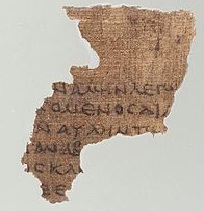
NT Sunday School Lesson 10 (JF) : Matthew 11:28-30; 12:1-13; Luke 7:36-50; 13:10-17
Matthew 11 Verse 28: What does it mean to come to Christ? Has he already told us how we can do that in readings from some of the previous lessons? The word translated “labor” means “wearying labor.” The phrase “heavy laden” translates a Greek word that means “weighed down.” What wearying, taxing work does Christ…
-

NT Sunday School Lesson 9: Matthew 6-7
As is usually the case, there is a lot of material to cover in this lesson, but the material in these chapters is so important that it would be a shame to focus on only part of it. So I will focus on the Lord’s prayer (Matthew 6:5-15), but I will also provide notes for…
-

NT Sunday School Lesson 8: Matthew 5
The lesson this week picks out the first part of a longer sermon. Matthew 5-7 give us Jesus’ Sermon on the Mount. Even if preparing for only the Sunday School lesson, it is probably best to read the entire sermon to see the context of this part. At the time of Jesus there seems to…
-

NT Sunday School Lesson 7: Mark 1-2; 4:35-41; 5; Luke 7:1-17
For purposes of this lesson, I take Luke 7:1-17 to be a supplement to the miracle stories we read in the material from Mark. So I will make my notes and questions on Mark, assuming that reading and thinking about Luke will be appropriate to them. As usual, I offer the reminder that these are…
-
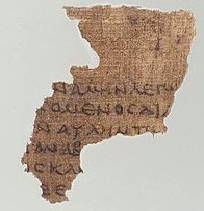
NT Sunday School Lesson 6: Luke 4:14-32; 5; 6:12-16; Matthew 10
Before we look at some individual verses from this lesson, consider the overall structure of Luke’s narrative and think about how Luke’s story of the calling of the Twelve compares to Matthew’s. I have put in bold the parts that the lesson focuses on, but I have outlined all four chapters so that you can…
-

NT Sunday School Lesson 5: John 3-4
There is a tremendous amount of material in this lesson, more than I can deal with in a few pages. So I have shortened my study questions by focusing on John 3:1-10. Verse 1: The name “Nicodemus” means “conqueror,” and it was a common name. We know little about Nicodemus. We know that he was…
-

NT Sunday School Lesson 4: Matthew 3-4; John 1:35-51
Matthew 3 Verses 1-2: What function did the herald of a king serve in ancient times? Why did kings need heralds? Is John the herald of a king? Why does this King need a herald? Compare John’s message to Jesus’s message in Matthew 4:17. Why do you think Matthew uses almost exactly the same words…
-

NT Sunday School Lesson 3: Luke 2; Matthew 2
Matthew 2 Verse 1: Who were the wise men? The phrase “wise men” is a somewhat odd translation of the Greek word magoi, “astrologers.” It is because of this word that sometimes we refer to the wise men as “magi.” We get the word “magician” from magoi. “The east” may refer to Mesopotamia, the center…
-

NT Sunday School Lesson 2: Luke 1, Matthew 1
We are all familiar with these chapters, so familiar that I suspect we often read them or hear them read without paying a lot of attention—if we read these chapters at all. It is as if we go on automatic pilot when we they come up. However, there is a great deal going on in…
-

NT Sunday School Lesson 1: Isaiah 61:1-3; Luke 3:4-11 (Joseph Smith Translation); John 1:1-14; John 20:31
Before I offer the study questions for this lesson, let me voice my objection to the format of our lesson manuals. They treat the Gospels as if the best way to understand them is to harmonize them, as if they are each histories of the life of Jesus rather than four different testimonies—for different audiences…
-

NT Sunday School Lessons: Between the Testaments
This is a sketch of the history between the fall of Israel and the New Testament. It may be helpful for understanding what is going on in the New Testament confrontations between Jesus and others and in understanding the tensions in Israelite society in Jesus’ day. Jewish history between the Old and New Testaments 606…
-

Sunday School Lesson 48: Zechariah 10-14, Malachi
Zechariah 1:7-6:8: We may be able to read the first six chapters of Zechariah as having a roughly chiastic structure. As with many chiasmi, however, deciding whether this is a chiasmus is a matter of judgment rather than fact. A 1:7-17: The Lord’s omniscience B 1:18-21: Judah and the empires C 2:1-5: Jerusalem’s territory [2:6-13:…
-
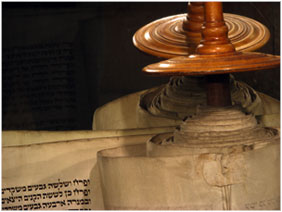
Sunday School Lesson 47: Ezra 1-8; Nehemiah 1-2, 4, 6, 8
Note that the books of Ezra and Nehemiah were considered one book until well after the time of Christ. The rough chronology below will help place this week’s material in its historical context. 606 The fall of Nineveh, capital of Assyria. Babylon becomes the major power. Daniel and others are taken to Babylon from Israel…
-
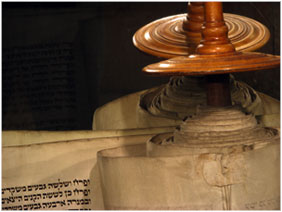
Sunday School Lesson 46: Daniel 2
Verses 4-5: Why does the king make this demand on his wise men? Verses 10-12: What did it mean to be a wise man in Babylon? Why was the king angry? Why do you think that the gods of Babylon are never mentioned in this story, not even negatively? Verse 24: Why does Daniel save…
-
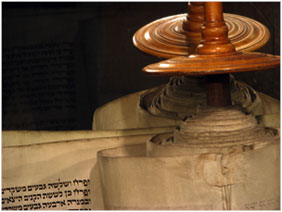
Sunday School Lesson 45: Daniel 1, 3, and 6; Esther 3-5, 7-8
Let me begin, once again, with a reminder that these are not intended for notes to help teachers, though they may also serve that purpose. I write them for people who want to study the lesson materials more thoroughly. So you’ll find explanatory notes and study questions (fewer for this lesson than for most), but…
-
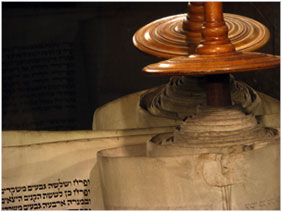
Sunday School Lesson 44: Ezekiel 43-44, 47
Ezekiel’s book goes back and forth between telling of the literal return from Babylon to Jerusalem in ways that we can also read to refer to the last days to speaking directly of the last days. (But when he thinks of the last days, is he thinking of the same event or events that we…
-

Lesson 43: Ezekiel 18, 34, and 37
Chronologically we turn backwards at this point. Jeremiah was the prophet in 597 B.C. when Jerusalem was finally captured and destroyed by Nebuchadnezzar and its people were carried into Babylon. Like Lehi, Ezekiel was a contemporary of Jeremiah, but Ezekiel did not prophesy with them. Instead, like Daniel, Ezekiel was with the large group from…
-

Sunday School Lesson 42: Jeremiah 16, 23, 29, 31
As you read Jeremiah, you should do what the lesson materials for Isaiah suggested: ask how those to whom Jeremiah was speaking would have understood his prophecies, how those in the Book of Mormon (who had a record of part of his prophecies with them) would have understood them, how the members of the Church…
-

Sunday School Lesson 41: Jeremiah 1-2, 15, 20, 26, 36-38
Historical Background Like Isaiah, the book of Jeremiah is a collection of prophecies edited into a book after the fact rather than one, extended prophecy. It describes itself as a history rather than as a prophecy, though obviously it contains a number of prophecies. But the word history doesn’t mean the same for ancient Israel…
-

Sunday School Lesson 40: Isaiah 54-56, 63-65
As was true of the preceding several chapters, such as chapters 52-53, it is easier in these chapters for us to see their symbolic meaning than it is to see it in many of the early chapters in Isaiah. Nevertheless, I think it helps, even in a case like this, to begin by understanding the…
-

Sunday School Lesson 39: Isaiah 50-53
These chapters are among the most beautiful in the Bible; they are an important part of Western literary culture, even for non-believers. Many scholars see the chapters as part of larger dramatic structure, a larger dramatic script as it were. In contemporary scripts the various parts would be marked clearly: “Chorus,” “Yahweh,” “Earth,” “Heavens,” “Armies,”…
-
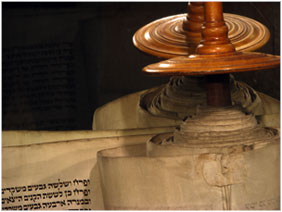
Sunday School Lesson 38: Isaiah 40-49
These chapters begin a new section of Isaiah. The first 39 chapters focused on Judah and Israel before the exile in Babylon: the sin and iniquity of Judah and Israel. This section, chapters 40-56, focuses on Judah and Israel during the exile: the promise of return. And the last chapters, 57-66, will focus on Judah…
-

Sunday School Lesson 37: Isaiah 22, 23, 24-26, 27, 28-30
Chapters 23 and 27 are not assigned for the lesson. Nevertheless, I have included them because I will refer to them. This week, rather than giving a list of questions to answer, I will suggest some exercises in reading that seem to me to be particularly appropriate to reading Isaiah, exercises in understanding in terms…
-

Sunday School Lesson 36: Isaiah 1-6
Scriptural Background The Savior tells us, “great are the words of Isaiah” (3 Nephi 23:1), and he commands us to search them diligently. (Towards the end of Book of Mormon history, Mormon repeats that command: Mormon 8:23.) Nephi tells us that his soul delights in Isaiah (2 Nephi 11:2), but he also tells us that…
